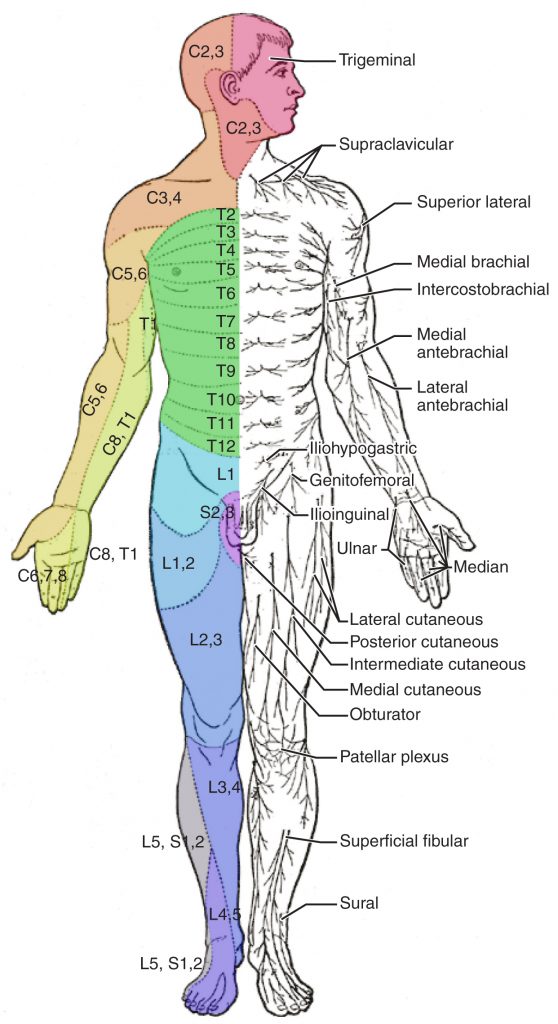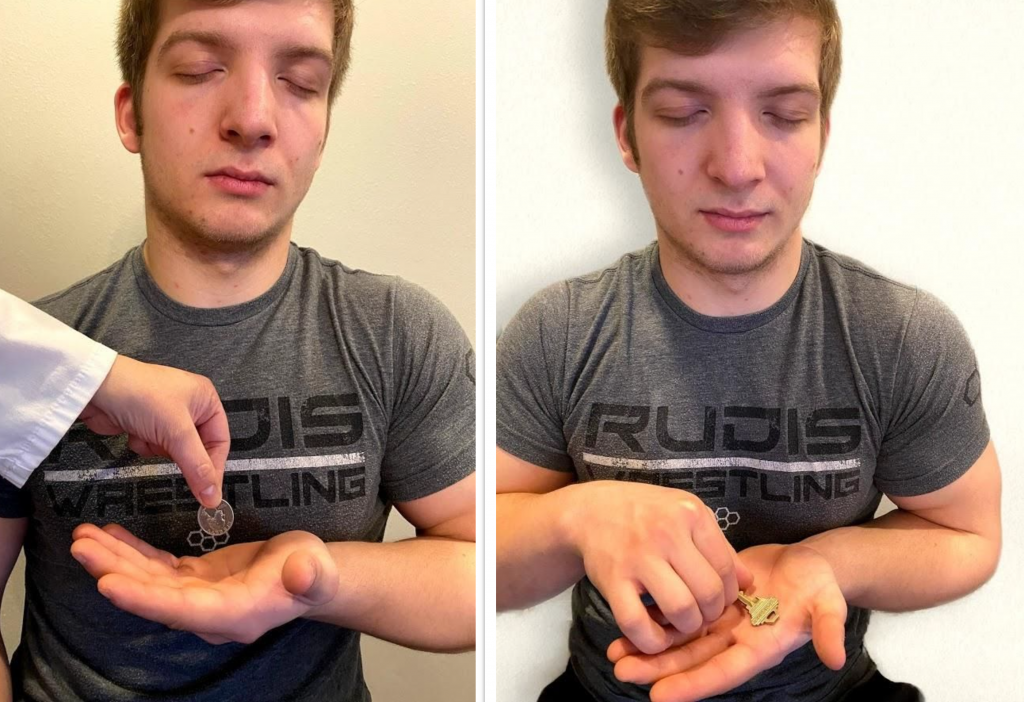6.6 Assessing Sensory Function
The sensory function exam tests the somatic senses, meaning those senses that are consciously perceived. Assessing sensory function includes two components, the sensory response that occurs when stimuli are perceived by afferent nerves in the peripheral nervous system and the cortical processing that occurs in the cerebral cortex of the brain.
Sensory Response
Testing of peripheral sensation begins with examining the response to light touch according to regions of the skin known as dermatomes. A dermatome is an area of the skin that is supplied by a single spinal nerve that sends information to the brain for processing. See Figure 6.26[1] for an illustration of color-coded dermatomes according to their associated spinal nerves. See more information about spinal nerves in the “Basic Neurological Concepts” section.
To test the sensory fields, ask the patient to close their eyes, and then gently touch the soft end of a cotton-tipped applicator on random locations of the skin according to the dermatome region. Instruct the patient to report “Now” when feeling the placement of the applicator. If a patient is unable to feel the sensation of a cotton applicator, an advanced technique is to use ice or even the prick of a pin in comatose patients.

It is not necessary to test every part of the skin’s surface during a routine neurological exam; testing a few distal areas with light touch is usually sufficient. In-depth testing is performed when the patient is exhibiting neurological symptoms such as motor deficits, numbness, tingling, and weakness. See Figure 6.27[2] demonstrating assessment of the sensory response.

Cortical Processing
Cortical processing that occurs in the cerebral cortex of the parietal lobe is assessed using stereogenesis. Stereognosis is the ability to perceive the physical form and identity of a familiar object such as a key or paper clip based on tactile stimuli alone.[3] The person typically uses the finger to move the object around and then correctly names the object.
To perform the stereognosis test, ask the patient to close their eyes; then place a familiar object in their hand and ask them to name it. Each hand should be tested with a different object. See Figure 6.28[4] for an image of a patient being tested for stereognosis.
Graphesthesia tests assess both cortical sensation and primary sensation. Graphesthesia is the ability to recognize a tracing on the skin while using the sensation of touch. To test graphesthesia, trace a number or letter on the patient’s outstretched palm and ask them to identify it.

- “1611 Dermatomes-02.jpg” by OpenStax Anatomy and Physiology is licensed under CC BY 4.0. Access for free at https://openstax.org/books/anatomy-and-physiology/pages/16-4-the-sensory-and-motor-exams ↵
- “Neuro Exam Image 25,” “Cranial Exam Image 12,” “Neuro Exam Image 26,” and “Neuro Exam Image 30” by Meredith Pomietlo for Chippewa Valley Technical College are licensed under CC BY 4.0 ↵
- This work is a derivative of StatPearls by Schermann and Tadi and is licensed under CC BY 4.0 ↵
- “Neuro Exam Image 8.png” and “Neuro Exam Image 31.png” by Meredith Pomietlo for Chippewa Valley Technical College are licensed under CC BY 4.0 ↵
An area of the skin that is supplied by a single spinal nerve.
The ability to perceive the physical form and identity of an object based on tactile stimuli alone.
The ability to recognize a tracing on the skin while using the sensation of touch.

